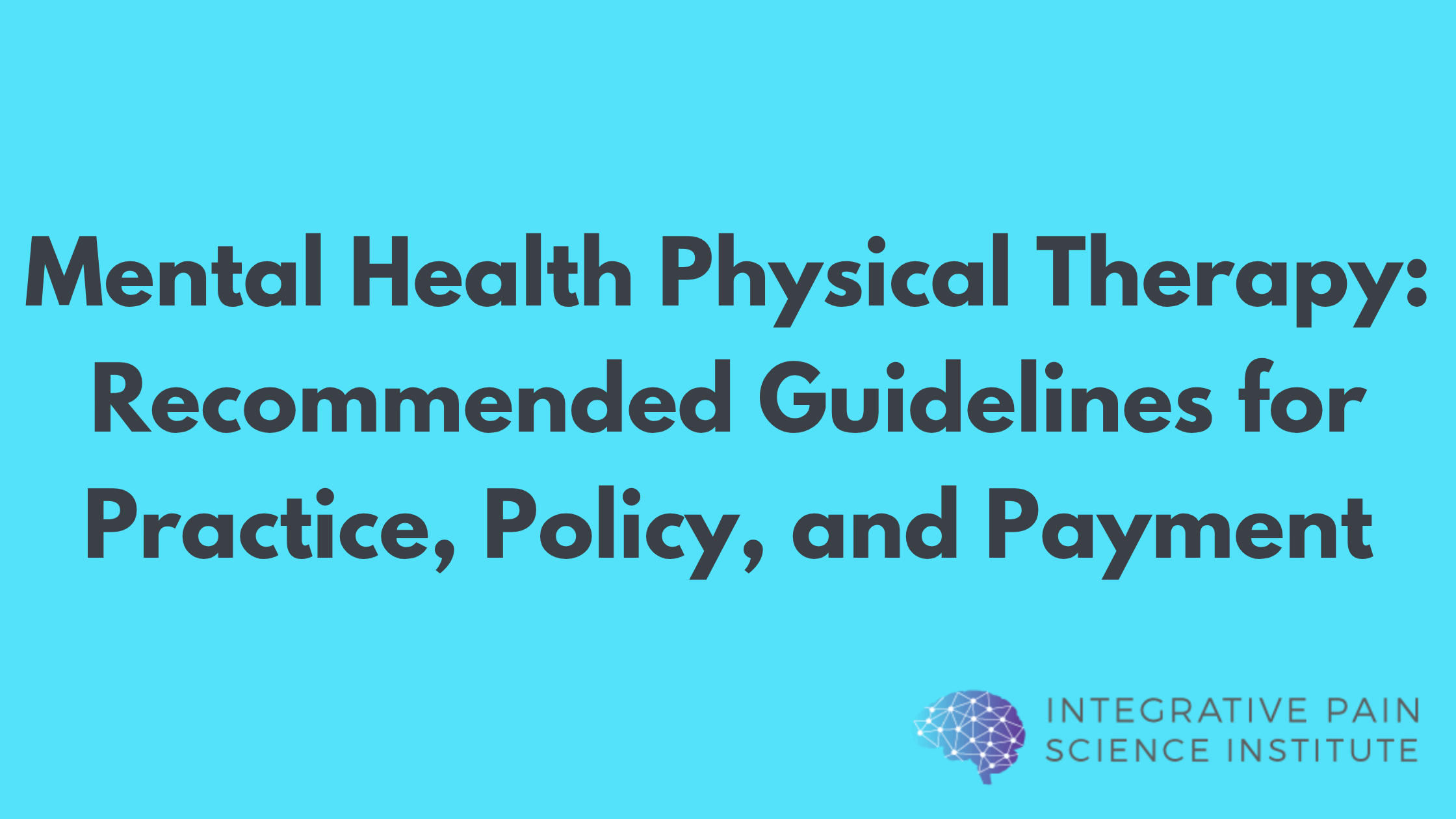Avoiding pain is one of the most natural human instincts. We all do it. We numb it with alcohol, drugs, we restrict our movement or our activities, and we withdraw. Pain is tough to live with, and we think we can’t live our lives while we have it—we put our lives on hold while we fight our battles with it. We tell ourselves, once this pain is gone, then I can get back to spending time with my kids, going kayaking, or asking that guy out.
But the problem is that pain can be persistent, and unpredictable, and we don’t know when—or if—it’ll ever really go away. Facing the truth of that can be really tough. We want to control our pain, and most often, we think we can.
This is where the power of creative hopelessness, another way of saying acceptance, comes in. Physical therapists working with patients managing chronic pain can yield creative hopelessness as a powerful tool in helping them realign their goals and values alongside their pain. Here’s what’s at stake: What if we wait our whole lives for our pain to go away, and it never does? We will have lived our lives in perpetual limbo. We will reach the end of our lives having half-lived them.

What is creative hopelessness?
Creative hopelessness is an acceptance and commitment therapy (ACT) tool that helps patients reassess their goals and values by helping them identify how they’ve been avoiding their pain, and then evaluating through their lived experience what that avoidance has cost them. Then patients have an opportunity to explore a new pathway to living fuller lives, with their pain—they can imagine what their lives would be like if they tried accepting what they can’t control and shifting behaviors around what they can.
Creative Hopelessness Case Study: Angela, swimmer with neck and shoulder pain
Let’s think about an example patient. Angela is a longtime swimmer with almost constant pain in her shoulders and neck. She’s in her early 40s, she’s accomplished in her career, and single. She’s a go-getter type, someone who plans, organizes, and leads. Angela comes in for physical therapy for her neck and shoulder pain that she’s had for years. Her pain has been worse lately, which isn’t surprising, given that she’s up for promotion, and she’s having a major conflict with her twin sister. Angela wants to get ahead in her career, and she wants to resolve things with her sister. She also wants to settle down with a partner, but isn’t dating right now because she wants to “get her shoulders and neck under control” first. She’s started taking over-the-counter anti-inflammatory drugs almost daily so she can make it through the day, and she’s pushing herself hard at the pool.
As a care professional, a physical therapist could start by asking what Angela has done to help her pain in the past.
PT: What brings you in today?
Angela: I’m having a lot of pain in my neck and shoulders, and it’s making it hard for me to sleep. It sometimes affects my focus at work too.
PT: That sounds tough. We’ll talk more about that. Is there anything that your pain is stopping you from doing?
Angela: Yes. Lately, I haven’t been going out much, or seeing my family. I’m in conflict with my sister right now, so we’re not talking. I was dating a few months ago, but I’ve stopped because the pain got too severe and I can’t focus on much else when it gets that bad, so I just go home and rest, sometimes with wine.
PT: All right. What have you tried to help with your pain?
Angela: I take Advil, ice every so often, and I try to drink a lot of water before and after swimming. I’ve been swimming more to try to loosen up my muscles. Sometimes it helps me release tension, but sometimes it seems to make it worse.
PT: That sounds really tough. You’re doing a lot to try to manage it. Do you think these things are helping?
Angela (after thinking a minute): Not really. The pain is pretty consistent and stable right now, and nothing I’m doing seems to be making it better overall.
Through more conversation and compassionate curiosity, the physical therapist can explore Angela’s attempts at controlling her pain. It’s quite possible that increased swimming and withdrawing at home without interacting with her family or going on dates are avoidance behaviors. Instead of doing what Angela most wants, she tries to control her pain with drugs, some alcohol, increased exercise, and isolating. Not only that, but she’s struggling to get good sleep, which could be exacerbating everything.
Angela’s avoidance behaviors are likely making her pain feel more severe. Not spending time with people she’s interested in or cares about may be increasing Angela’s anxiety and worry, which could in turn be making her suffering from her pain feel worse. This is when creative hopelessness may help.

Pain and suffering aren’t the same thing
Suffering from pain, and pain itself, are two different things. We can’t control how much pain we have, but we can control our relationship to the suffering of pain. Through a creative hopelessness lens, the physical therapist can encourage Angela to think about ways to manage her pain and what she most wants in life at the same time. But the important thing is to first ask Angela what is most important to her (values), and what behaviors she’s doing that in the way of that.
Suffering from pain, and pain itself, are two different things. We can’t control how much pain we have, but we can control our relationship to the suffering of pain. Share on XWhen navigating creative hopelessness, it’s important to use the patient’s experience as a compass so that the patient feels empowered to find their own answers, and not provide a prescription of what you as the care professional think they should do. If Angela can see that her patterns of behavior are not effective at stopping her pain, she can empower herself to try new behaviors. By identifying what she can’t control (experiencing shoulder pain) and what she can control (living life according to values), acceptance and creative hopelessness can guide Angela to making choices that help her live more fully.

PT: So we’ve figured out that what you’re doing now isn’t really working to help manage pain. And that’s okay! It’s only natural that you’re experimenting with finding the right ways to manage it, it’s just that these aren’t working right now. We can try some physical therapy, and other techniques to help lessen the pain. But what if the pain never went away? How would you live your life differently today if you knew that your pain would never go away?
Angela: Huh. I’d never thought of that before. I do hope it goes away, because I hate it. But I guess if it never went away, I’d want to stop avoiding the stuff I’ve been putting off. Maybe I’d schedule a spa day with my sister so we can both relax and talk. I’d probably back off from swimming a little. I’ve been thinking about a yoga class that meets near my office.
Pain can be very difficult to treat, but it isn’t inevitable. If we let go of our control strategies of pain that aren’t working, and accept that we can’t always control how much pain we feel, we gain more clarity over what we can control, and can take steps to move closer to the lives we want. When patients reframe their avoidance of pain based on their own experience, and realize the costs, they are empowered to make lasting changes to live their lives more fully, even with their pain. This is creative hopelessness.
REFERENCES
creative hopelessness



